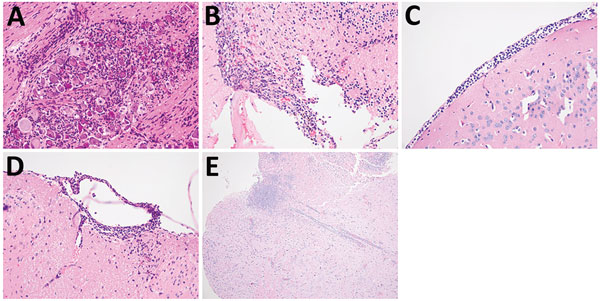Volume 23, Number 5—May 2017
CME ACTIVITY - Research
Increased Neurotropic Threat from Burkholderia pseudomallei Strains with a B. mallei–like Variation in the bimA Motility Gene, Australia
Figure 3

Figure 3. Central nervous system pathology in mice that had signs of neurologic involvement and succumbed to infection with bimBm and bimBp Burkholderia pseudomallei isolates. Evidence of central nervous system pathology was demonstrated in these mice. Inflammatory infiltrates were prominent in trigeminal nerve branches and ganglion (original magnification ×400) (A) and in the olfactory bulb (original magnification ×200) (B). Cranial meningitis (C) and spinal (D) meningitis were observed, often with involvement of underlying parenchyma (original magnification ×400). Microabscesses were frequently observed in cerebral cortex (original magnification ×100) (E), brainstem (not shown) and cerebellum (not shown) of mice that had neurologic symptoms and succumbed to infection.